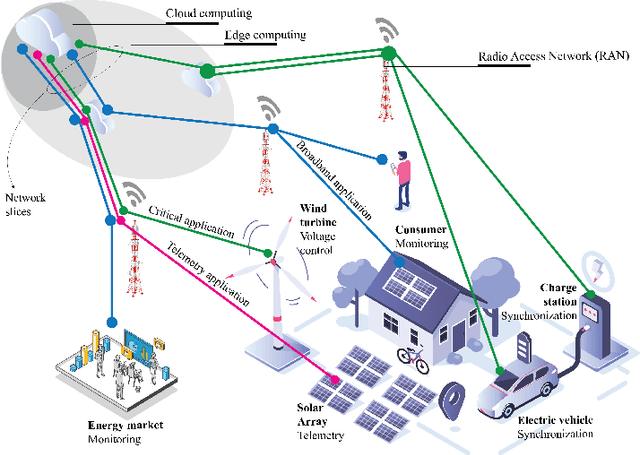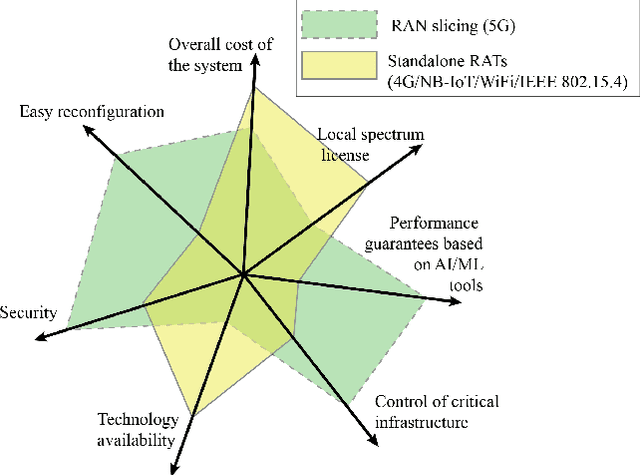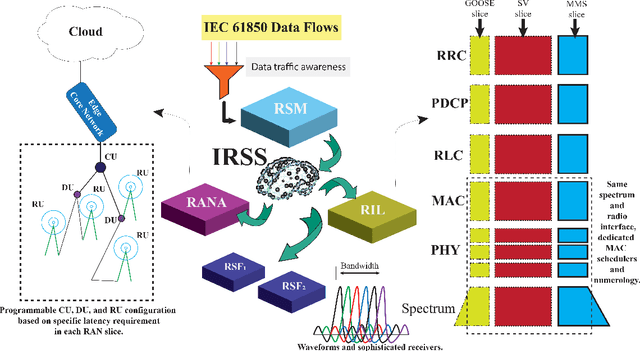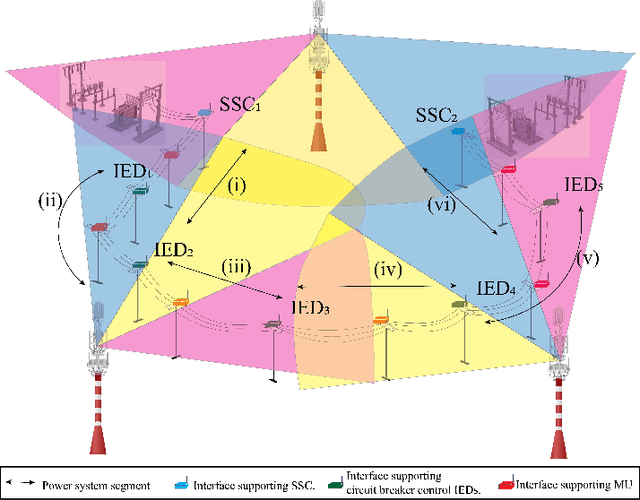Demóstenes Z. Rodríguez
Boosting 5G on Smart Grid Communication: A Smart RAN Slicing Approach
Aug 30, 2022



Abstract:Fifth-generation (5G) and beyond systems are expected to accelerate the ongoing transformation of power systems towards the smart grid. However, the inherent heterogeneity in smart grid services and requirements pose significant challenges towards the definition of a unified network architecture. In this context, radio access network (RAN) slicing emerges as a key 5G enabler to ensure interoperable connectivity and service management in the smart grid. This article introduces a novel RAN slicing framework which leverages the potential of artificial intelligence (AI) to support IEC 61850 smart grid services. With the aid of deep reinforcement learning, efficient radio resource management for RAN slices is attained, while conforming to the stringent performance requirements of a smart grid self-healing use case. Our research outcomes advocate the adoption of emerging AI-native approaches for RAN slicing in beyond-5G systems, and lay the foundations for differentiated service provisioning in the smart grid.
Incorporating Wireless Communication Parameters into the E-Model Algorithm
Mar 05, 2021



Abstract:Telecommunication service providers have to guarantee acceptable speech quality during a phone call to avoid a negative impact on the users' quality of experience. Currently, there are different speech quality assessment methods. ITU-T Recommendation G.107 describes the E-model algorithm, which is a computational model developed for network planning purposes focused on narrowband (NB) networks. Later, ITU-T Recommendations G.107.1 and G.107.2 were developed for wideband (WB) and fullband (FB) networks. These algorithms use different impairment factors, each one related to different speech communication steps. However, the NB, WB, and FB E-model algorithms do not consider wireless techniques used in these networks, such as Multiple-Input-Multiple-Output (MIMO) systems, which are used to improve the communication system robustness in the presence of different types of wireless channel degradation. In this context, the main objective of this study is to propose a general methodology to incorporate wireless network parameters into the NB and WB E-model algorithms. To accomplish this goal, MIMO and wireless channel parameters are incorporated into the E-model algorithms, specifically into the $I_{e,eff}$ and $I_{e,eff,WB}$ impairment factors. For performance validation, subjective tests were carried out, and the proposed methodology reached a Pearson correlation coefficient (PCC) and a root mean square error (RMSE) of $0.9732$ and $0.2351$, respectively. It is noteworthy that our proposed methodology does not affect the rest of the E-model input parameters, and it intends to be useful for wireless network planning in speech communication services.
* 18 pages
 Add to Chrome
Add to Chrome Add to Firefox
Add to Firefox Add to Edge
Add to Edge